All Exams >
Grade 1 >
Science for Grade 1 >
All Questions
All questions of The Sun, Moon and Stars for Grade 1 Exam
Choose the correct sentence. - a)The Sun and the Moon give us light and heat
- b)The Sun gives us light and heat
- c)The Moon gives us light and heat
- d)All the stars give us light and heat
Correct answer is option 'B'. Can you explain this answer?
Choose the correct sentence.
a)
The Sun and the Moon give us light and heat
b)
The Sun gives us light and heat
c)
The Moon gives us light and heat
d)
All the stars give us light and heat
|
|
Sarika dubey answered |
The correct sentence is option 'B': "The Sun gives us light and heat."
Explanation:
The given sentence options are:
a) The Sun and the Moon give us light and heat.
b) The Sun gives us light and heat.
c) The Moon gives us light and heat.
d) All the stars give us light and heat.
1. Understanding the sentence options:
- Option 'a' states that both the Sun and the Moon give us light and heat.
- Option 'b' states that only the Sun gives us light and heat.
- Option 'c' states that only the Moon gives us light and heat.
- Option 'd' states that all the stars give us light and heat.
2. Analyzing the correct sentence:
The correct sentence is option 'B' because it accurately states that the Sun gives us light and heat.
3. Understanding the roles of the Sun, Moon, and stars:
- The Sun is a star that is closest to the Earth and is responsible for providing light and heat to our planet.
- The Moon is not a source of light or heat. It reflects the light of the Sun, which is why we see it shining in the night sky.
- Stars are distant celestial objects that emit their own light and heat, similar to the Sun. However, they are located far away from the Earth and do not directly provide light and heat to us.
4. Applying the correct sentence to the given information:
Since the Sun is the primary source of light and heat for Earth, option 'B' correctly states that the Sun gives us light and heat. The Moon only reflects the Sun's light, and stars are not mentioned in the sentence. Therefore, option 'B' is the correct sentence out of the given options.
Conclusion:
The correct sentence is option 'B': "The Sun gives us light and heat." This sentence accurately reflects the role of the Sun as the primary source of light and heat for Earth.
Explanation:
The given sentence options are:
a) The Sun and the Moon give us light and heat.
b) The Sun gives us light and heat.
c) The Moon gives us light and heat.
d) All the stars give us light and heat.
1. Understanding the sentence options:
- Option 'a' states that both the Sun and the Moon give us light and heat.
- Option 'b' states that only the Sun gives us light and heat.
- Option 'c' states that only the Moon gives us light and heat.
- Option 'd' states that all the stars give us light and heat.
2. Analyzing the correct sentence:
The correct sentence is option 'B' because it accurately states that the Sun gives us light and heat.
3. Understanding the roles of the Sun, Moon, and stars:
- The Sun is a star that is closest to the Earth and is responsible for providing light and heat to our planet.
- The Moon is not a source of light or heat. It reflects the light of the Sun, which is why we see it shining in the night sky.
- Stars are distant celestial objects that emit their own light and heat, similar to the Sun. However, they are located far away from the Earth and do not directly provide light and heat to us.
4. Applying the correct sentence to the given information:
Since the Sun is the primary source of light and heat for Earth, option 'B' correctly states that the Sun gives us light and heat. The Moon only reflects the Sun's light, and stars are not mentioned in the sentence. Therefore, option 'B' is the correct sentence out of the given options.
Conclusion:
The correct sentence is option 'B': "The Sun gives us light and heat." This sentence accurately reflects the role of the Sun as the primary source of light and heat for Earth.
| 1 Crore+ students have signed up on EduRev. Have you? Download the App |
What's a galaxy?- a)The planets and satellites
- b)The Universe
- c)A solar system
- d)A collection of solar systems
Correct answer is option 'D'. Can you explain this answer?
What's a galaxy?
a)
The planets and satellites
b)
The Universe
c)
A solar system
d)
A collection of solar systems
|
|
Naina Sharma answered |
A galaxy is a huge collection of gas, dust, and billions of stars and their solar systems, all held together by gravity. We live on a planet called Earth that is part of our solar system.
What can we see in the sky at night?- a)Sun
- b)Earth
- c)Stars
- d)None
Correct answer is option 'C'. Can you explain this answer?
What can we see in the sky at night?
a)
Sun
b)
Earth
c)
Stars
d)
None
|
|
Pranav Singh answered |
Stars can be seen in the sky at night.
How long does it take the Moon to orbit the Earth?- a)24 h
- b)12 h
- c)4 weeks
- d)1 year
Correct answer is option 'C'. Can you explain this answer?
How long does it take the Moon to orbit the Earth?
a)
24 h
b)
12 h
c)
4 weeks
d)
1 year
|
|
Ravi dey answered |
The Moon takes approximately 4 weeks to orbit the Earth. This is the correct answer because the Moon's orbital period, also known as its synodic period, is the time it takes for the Moon to complete one full orbit around the Earth and return to the same position relative to the Sun.
The Moon's orbit around the Earth is not a perfect circle, but rather an ellipse, with the Earth located at one of the foci of the ellipse. This means that the Moon's distance from the Earth varies throughout its orbit. However, on average, the Moon is about 384,400 kilometers away from the Earth.
The Moon's orbital period is determined by the gravitational pull of the Earth. The Earth's gravity keeps the Moon in its orbit and causes it to move in a circular path around the Earth. This means that the Moon is constantly being pulled toward the Earth, but its forward motion keeps it from falling into the Earth.
The Moon's orbital period is also influenced by the gravitational pull of the Sun. The Sun's gravity affects the Moon's orbit, causing it to deviate slightly from a perfect circle. This is why the Moon's orbit is an ellipse rather than a circle.
The Moon's synodic period of approximately 4 weeks is also the reason why we see different phases of the Moon throughout the month. As the Moon orbits the Earth, the Sun illuminates different portions of the Moon, resulting in the different phases we observe from Earth.
In conclusion, the Moon takes approximately 4 weeks to orbit the Earth. This is due to the combined gravitational forces of the Earth and the Sun, which keep the Moon in its elliptical orbit around the Earth.
The Moon's orbit around the Earth is not a perfect circle, but rather an ellipse, with the Earth located at one of the foci of the ellipse. This means that the Moon's distance from the Earth varies throughout its orbit. However, on average, the Moon is about 384,400 kilometers away from the Earth.
The Moon's orbital period is determined by the gravitational pull of the Earth. The Earth's gravity keeps the Moon in its orbit and causes it to move in a circular path around the Earth. This means that the Moon is constantly being pulled toward the Earth, but its forward motion keeps it from falling into the Earth.
The Moon's orbital period is also influenced by the gravitational pull of the Sun. The Sun's gravity affects the Moon's orbit, causing it to deviate slightly from a perfect circle. This is why the Moon's orbit is an ellipse rather than a circle.
The Moon's synodic period of approximately 4 weeks is also the reason why we see different phases of the Moon throughout the month. As the Moon orbits the Earth, the Sun illuminates different portions of the Moon, resulting in the different phases we observe from Earth.
In conclusion, the Moon takes approximately 4 weeks to orbit the Earth. This is due to the combined gravitational forces of the Earth and the Sun, which keep the Moon in its elliptical orbit around the Earth.
Spinning of the Earth on its axis is called...- a)Rotation
- b)Revolution
- c)Double axis
- d)None
Correct answer is option 'A'. Can you explain this answer?
Spinning of the Earth on its axis is called...
a)
Rotation
b)
Revolution
c)
Double axis
d)
None
|
|
Sara singh answered |
Explanation:
- Spinning of the Earth on its axis is called rotation.
- The Earth rotates on its axis once every 24 hours, which causes day and night cycle.
- The axis of rotation is an imaginary line passing through the North and South Poles of the Earth.
- The rotation of the Earth is responsible for many natural phenomena like the Coriolis effect, the Foucault pendulum, and the formation of cyclones and hurricanes.
- Rotation is also responsible for the variation in the length of day and night at different latitudes.
What do we get from our star the Sun?- a)Heat
- b)Food
- c)Air
- d)None
Correct answer is option 'A'. Can you explain this answer?
What do we get from our star the Sun?
a)
Heat
b)
Food
c)
Air
d)
None
|
|
Pranav Singh answered |
We get heat and light from the Sun.
What can we see in the sky during the day? - a)The Earth
- b)Satellite
- c)Clouds
- d)Star
Correct answer is option 'C'. Can you explain this answer?
What can we see in the sky during the day?
a)
The Earth
b)
Satellite
c)
Clouds
d)
Star
|
|
Pranav Singh answered |
We can see clouds in the afternoon. But Sometimes we see stars in the sky during the day.
What's this?
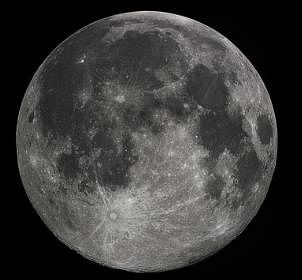
- a)A satellite called Moon.
- b)A planet.
- c)A star called Moon.
- d)None of these
Correct answer is option 'A'. Can you explain this answer?
What's this?


a)
A satellite called Moon.
b)
A planet.
c)
A star called Moon.
d)
None of these
|
|
Naina Sharma answered |
Earth's Moon is the fifth largest of the 200+ moons orbiting planets in our solar system. Earth's only natural satellite is simply called "the Moon" because people didn't know other moons existed until Galileo Galilei discovered four moons orbiting Jupiter in 1610.
This is the Sun. Do you know what is it?
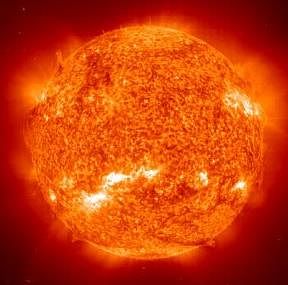
- a)A satellite
- b)A planet
- c)A star
- d)A rock
Correct answer is option 'C'. Can you explain this answer?
This is the Sun. Do you know what is it?


a)
A satellite
b)
A planet
c)
A star
d)
A rock
|
|
Naina Sharma answered |
The Sun is the star at the center of the Solar System. It is a nearly perfect sphere of hot plasma, heated to incandescence by nuclear fusion reactions in its core, radiating the energy mainly as visible light, ultraviolet light, and infrared radiation.
What's the name of our Galaxy?
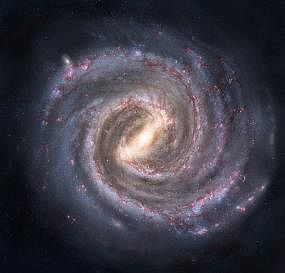
- a)Earth
- b)The Milky Way
- c)Sun
- d)Moon
Correct answer is option 'B'. Can you explain this answer?
What's the name of our Galaxy?


a)
Earth
b)
The Milky Way
c)
Sun
d)
Moon
|
|
Swati Sharma answered |
The Milky Way gets its name from a Greek myth about the goddess Hera who sprayed milk across the sky. In other parts of the world, our galaxy goes by other names. In China it's called the “Silver River,” and in the Kalahari Desert in Southern Africa, it's called the “Backbone of Night.”
How long does it take the Earth to orbit the Sun?- a)24 h
- b)12 h
- c)4 weeks
- d)1 year
Correct answer is option 'D'. Can you explain this answer?
How long does it take the Earth to orbit the Sun?
a)
24 h
b)
12 h
c)
4 weeks
d)
1 year
|
|
Neha Verma answered |
It takes the Earth 1 year to orbit the Sun
What do planets orbit around?- a)A star
- b)A satellite
- c)Another planet
- d)A galaxy
Correct answer is option 'A'. Can you explain this answer?
What do planets orbit around?
a)
A star
b)
A satellite
c)
Another planet
d)
A galaxy
|
|
Swati Sharma answered |
The celestial bodies revolving around the Sun or any other star are called planets. According to the International Astronomical Union, there are eight planets in our solar system - Mercury, Venus, Earth, Mars, Jupiter, Saturn, Uranus and Neptune. Apart from these, there are three more dwarf planets - Siris, Pluto and Eris.
What are the two movements of the Earth?
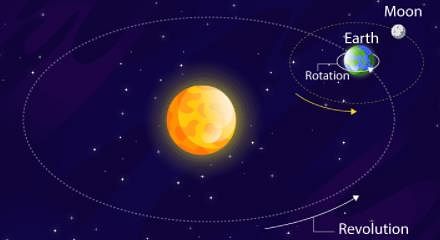
- a)Rotation around itself and Revolution around the Moon
- b)Rotation around the Moon and Revolution around the Sun
- c)Rotation around the Sun and Revolution around the Sun
- d)Rotation around itself and Revolution around the Sun
Correct answer is option 'D'. Can you explain this answer?
What are the two movements of the Earth?


a)
Rotation around itself and Revolution around the Moon
b)
Rotation around the Moon and Revolution around the Sun
c)
Rotation around the Sun and Revolution around the Sun
d)
Rotation around itself and Revolution around the Sun
|
|
Neha Verma answered |
The earth has two types of motions, namely rotation and revolution. Rotation is the movement of the earth on its axis. The movement of the earth around the sun in a fixed path or orbit is called Revolution.
What's the centre of our solar system?
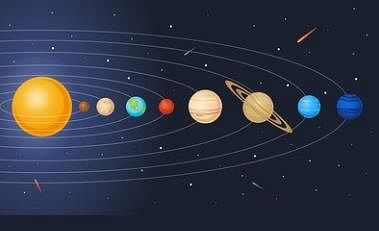
- a)The Earth
- b)The Sun
- c)The Moon
- d)Saturn
Correct answer is option 'B'. Can you explain this answer?
What's the centre of our solar system?


a)
The Earth
b)
The Sun
c)
The Moon
d)
Saturn
|
|
Pranav Singh answered |
The Sun is the center of our solar system and makes up 99.8 percent of the mass of the entire solar system.
What causes day and night?- a)Revolution of Earth
- b)Rotation of Earth
- c)The moon blocks the Sun
- d)None of these
Correct answer is option 'B'. Can you explain this answer?
What causes day and night?
a)
Revolution of Earth
b)
Rotation of Earth
c)
The moon blocks the Sun
d)
None of these
|
|
Rahul Desai answered |
The Earth orbits the sun once every 365 days and rotates about its axis once every 24 hours. Day and night are due to the Earth rotating on its axis, not its orbiting around the sun.
Choose the correct sentences- a)The Moon is a satellite and orbit the Earth
- b)The Moon is a satellite and orbit the Sun
- c)The Moon isn't a satellite
- d)None
Correct answer is option 'A'. Can you explain this answer?
Choose the correct sentences
a)
The Moon is a satellite and orbit the Earth
b)
The Moon is a satellite and orbit the Sun
c)
The Moon isn't a satellite
d)
None
|
|
Neha Verma answered |
The moon is a satellite because it orbits Earth. Usually, the word "satellite" refers to a machine that is launched into space and moves around Earth or another body in space. Earth and the moon are examples of natural satellites. Thousands of artificial, or man-made, satellites orbit Earth.
How do we call a group of stars that make shapes in the night sky?- a)solar system
- b)constellations
- c)Milky Way
- d)Galaxy
Correct answer is option 'B'. Can you explain this answer?
How do we call a group of stars that make shapes in the night sky?
a)
solar system
b)
constellations
c)
Milky Way
d)
Galaxy
|
|
Neha Verma answered |
A constellation is a group of stars that appears to form a pattern or picture like Orion the Great Hunter, Leo the Lion, or Taurus the Bull. Constellations are easily recognizable patterns that help people orient themselves using the night sky.
Tick the seasons:- a)SPRING
- b)SUMMER
- c)AUTUMN
- d)WINTER
Correct answer is option 'A,B,C,D'. Can you explain this answer?
Tick the seasons:
a)
SPRING
b)
SUMMER
c)
AUTUMN
d)
WINTER
|
|
Rahul Desai answered |
Seasons are largely due to factors surrounding the Earth's tilted axis as it revolves around the sun. A season is a period of the year that is distinguished by special climate conditions. The four seasons—spring, summer, fall, and winter—follow one another regularly.
What's this?
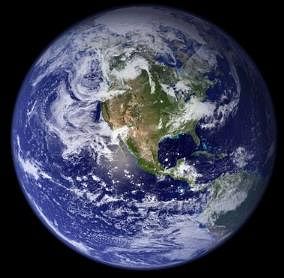
- a)A satellite called Earth
- b)Our planet, the Earth
- c)A planet called Blue
- d)A satellite
Correct answer is option 'B'. Can you explain this answer?
What's this?


a)
A satellite called Earth
b)
Our planet, the Earth
c)
A planet called Blue
d)
A satellite
|
|
Pranav Singh answered |
Earth, third planet from the Sun and the fifth largest planet in the solar system in terms of size and mass. Its single most outstanding feature is that its near-surface environments are the only places in the universe known to harbour life.
Earth does a complete revolution every _______- a)10 years
- b)12 hours
- c)24 hours
- d)365 days
Correct answer is option 'D'. Can you explain this answer?
Earth does a complete revolution every _______
a)
10 years
b)
12 hours
c)
24 hours
d)
365 days
|
|
Pranav Singh answered |
The Earth takes 365 days and five hours to make one complete revolution around the sun. The plane that the Earth is in as it orbits the Sun is known as the ecliptic.
Chapter doubts & questions for The Sun, Moon and Stars - Science for Grade 1 2024 is part of Grade 1 exam preparation. The chapters have been prepared according to the Grade 1 exam syllabus. The Chapter doubts & questions, notes, tests & MCQs are made for Grade 1 2024 Exam. Find important definitions, questions, notes, meanings, examples, exercises, MCQs and online tests here.
Chapter doubts & questions of The Sun, Moon and Stars - Science for Grade 1 in English & Hindi are available as part of Grade 1 exam.
Download more important topics, notes, lectures and mock test series for Grade 1 Exam by signing up for free.
Science for Grade 1
17 videos|85 docs|22 tests
|
Signup to see your scores go up within 7 days!
Study with 1000+ FREE Docs, Videos & Tests
10M+ students study on EduRev
|
Free Exam Preparation
at your Fingertips!
Access Free Study Material - Test Series, Structured Courses, Free Videos & Study Notes and Prepare for Your Exam With Ease

 Join the 10M+ students on EduRev
Join the 10M+ students on EduRev
|

|
Forgot Password
OR
Signup to see your scores
go up within 7 days!
Access 1000+ FREE Docs, Videos and Tests
Takes less than 10 seconds to signup








